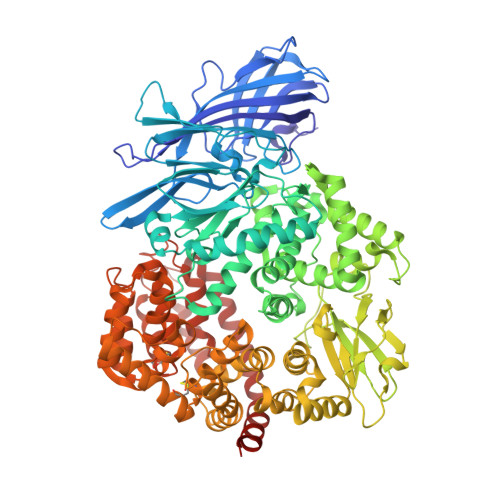The Rational Design of Therapeutic Peptides for Aminopeptidase N using a Substrate-Based Approach.
Joshi, S., Chen, L., Winter, M.B., Lin, Y.L., Yang, Y., Shapovalova, M., Smith, P.M., Liu, C., Li, F., LeBeau, A.M.(2017) Sci Rep 7: 1424-1424
- PubMed: 28465619
- DOI: https://doi.org/10.1038/s41598-017-01542-5
- Primary Citation of Related Structures:
6BUY, 6BV0, 6BV1, 6BV2, 6BV3, 6BV4 - PubMed Abstract:
The M1 family of metalloproteases represents a large number of exopeptidases that cleave single amino acid residues from the N-terminus of peptide substrates. One member of this family that has been well studied is aminopeptidase N (APN), a multifunctional protease known to cleave biologically active peptides and aide in coronavirus entry. The proteolytic activity of APN promotes cancer angiogenesis and metastasis making it an important target for cancer therapy. To understand the substrate specificity of APN for the development of targeted inhibitors, we used a global substrate profiling method to determine the P1-P4' amino acid preferences. The key structural features of the APN pharmacophore required for substrate recognition were elucidated by x-ray crystallography. By combining these substrate profiling and structural data, we were able to design a selective peptide inhibitor of APN that was an effective therapeutic both in vitro and in vivo against APN-expressing prostate cancer models.
Organizational Affiliation:
Department of Pharmacology, University of Minnesota Medical School, Minneapolis, MN, 55455, USA.





















